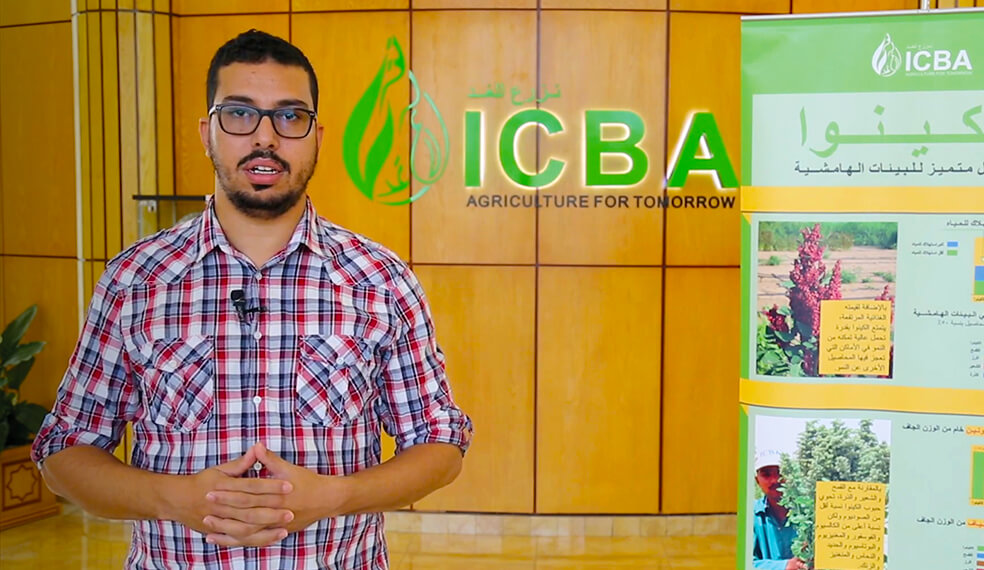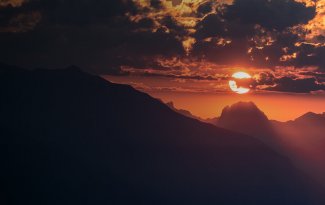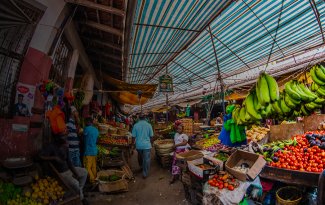How do you improve food security when a country’s staple grain crops – wheat, barley and corn – are impacted by the increasingly unpredictable weather patterns?
In the case of Rhamna in Morocco, the solution was to introduce a new crop, one that had never been grown in the area before: quinoa.
The challenge
The province of Rhamna in Morocco is predominantly rural. Despite minimal rainfall and nutrient-poor soil, the area depends on agriculture and the many women farmers who are responsible for food production. As climate change continues to affect their staple grain crops, farmers needed help to ensure they could feed their communities and make a living for themselves.
The solution was the brainchild of a global partnership. Morocco’s Mohammed VI Polytechnic University (UM6P) joined forces with Canada’s International Development Research Center (IDRC) and the UAE’s International Center for Biosaline Agriculture (ICBA) to see how quinoa production could be scaled up to benefit food security in poor, rural areas.
Why quinoa?
Compared to grains like barley, wheat and corn, quinoa is far more resilient to drought. It is also an important source of non-animal protein, so increasingly popular with the growing number of vegetarians and vegans around the world.
The cost of quinoa has risen across the globe, yet farmers don’t always benefit

It’s all good and well to have a crop that grows and a potential market – you need to ensure that the farmers have the latest industry knowledge to ensure they can profit from their hard work.
“As a result of greater demand, the cost of quinoa has risen across the globe. Yet farmers don’t always benefit,” says Hafida El Filahi, one of the local farmers and a Cooperative General Secretary. “Just look at cocoa and coffee – they’re popular all over the world, but farmers often can’t make a decent living from them. That’s why it was so important that UM6P helped us set up co-operatives.”
What has the initiative done?
“Our partnership with UM6P and the IDRC develops and integrates new, evolved quinoa varieties which have been proven to perform better than any others," says the ICBA’s Abdelaziz Hirich, “it’s really very exciting.”
“We then assess the seeds alongside farming practises so we can refine the best way of producing higher yields for the local farmers.
The quinoa seed yield has increased by almost 150%
In the first year of trials, our research helped produce a seed yield 20% higher than local seeds. Now in the fifth year, yield has increased by almost 150%. Think of the possibilities of feeding the population with those numbers.”
So far, the initiative has reached over 2,000 farmers with training and practical field days. But it’s not just about better ways of growing quinoa. It also takes the crop from field to fork by helping farmers to market quinoa, advising on how to integrate it into people’s daily diet, and by developing different quinoa products to suit Moroccan food, such as couscous, breads and cakes.
This enables farmers to increase their income and it benefits consumers who have access to a more nutritious, protein-rich seed source.

Has it worked for the farmers?
“It all started with training,” says Hafida El Filahi. “The team from UM6P showed us improved ways of farming, new types of high-yield seeds and fertilizer.
“It was great as some of the older people in the village had never studied before. It made us feel young!
“We also got to share our beautiful corner of Morocco, as well as some of the old ways we have on the farm with the group from UM6P.”
Hafida is now a General Secretary of a local cooperative. “We all club together to get a better price. Sometimes, quinoa farmers can get as little as 8% of the final value of the product – we have been able to get a lot more with this initiative.
“This means we have more money to invest, helping us improve our methods and market our product to more people. In the long term, it is going to bring a lot more money into this province. At the moment, this is still one of the poorest areas of Morocco.
“Not only that, but other women, like me, are taking a big role in running these cooperatives. We feel like now more than ever we are in control of our destinies. Who would have thought I would be a General Secretary!”
Tags
Discover more

Our vision for Africa
With 60% of the world’s arable land, our continent is at the heart of feeding the world’s population.

Why customize fertilizers?
By giving plants just the right nutrients, we can increase yield and minimise waste.

Education to inspire change
We invest in education to make it easier for people to learn and bring ideas to life.






